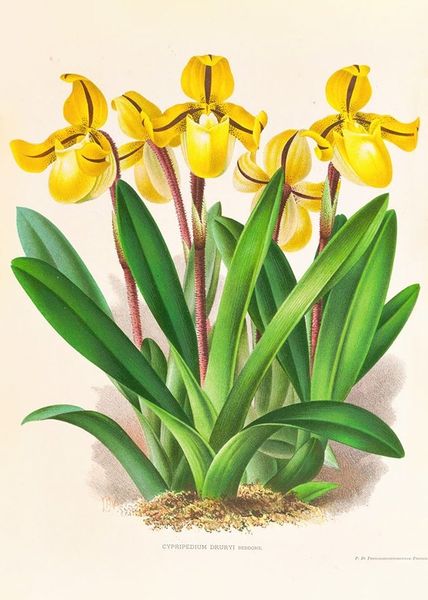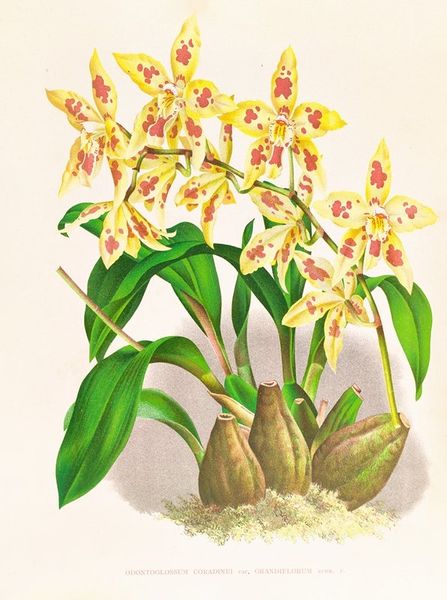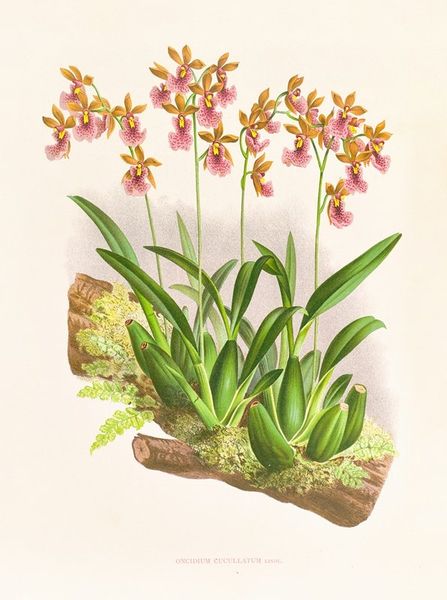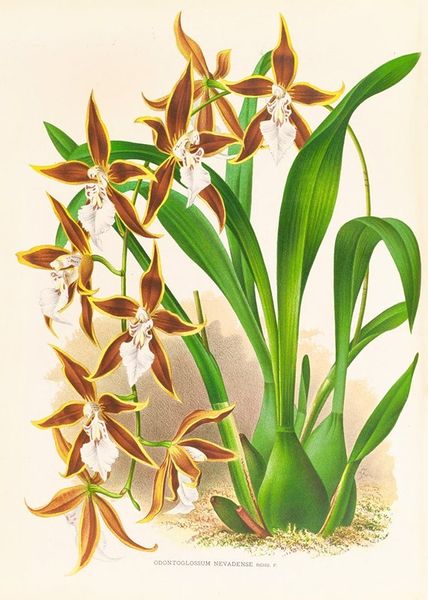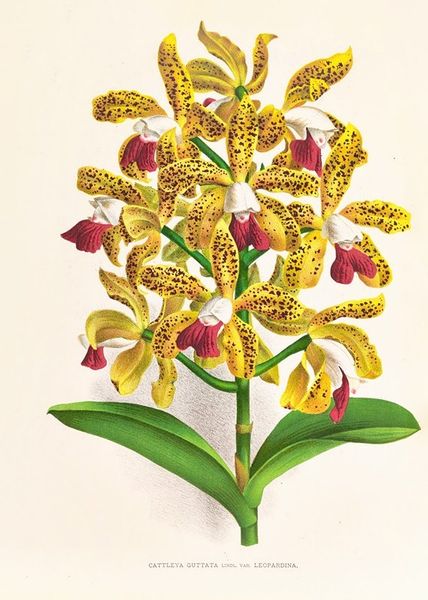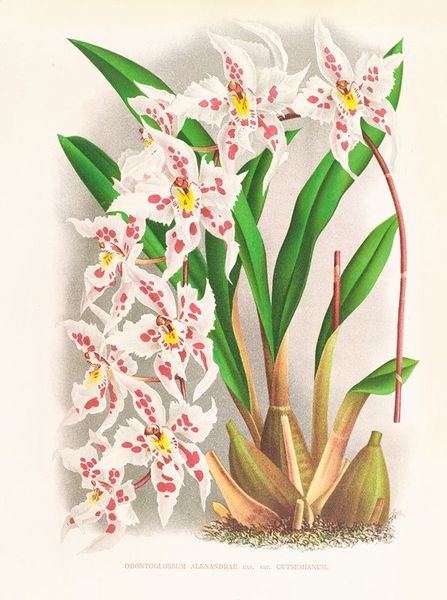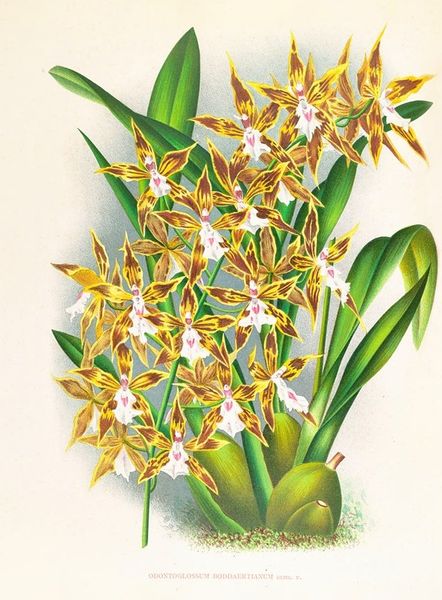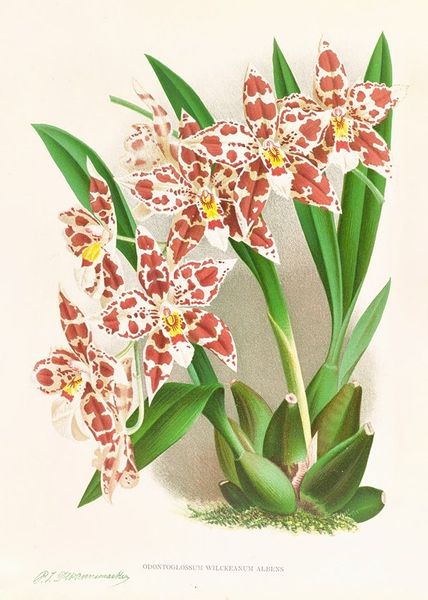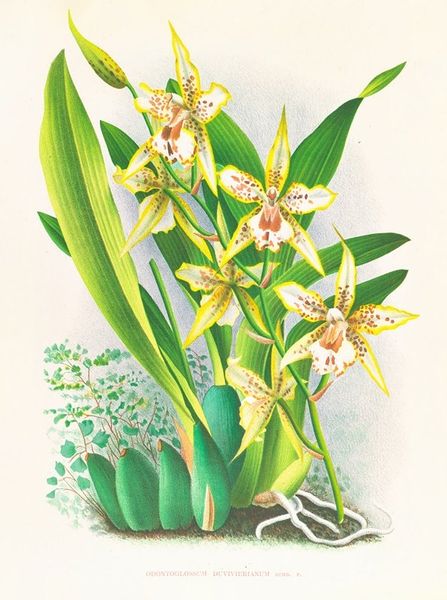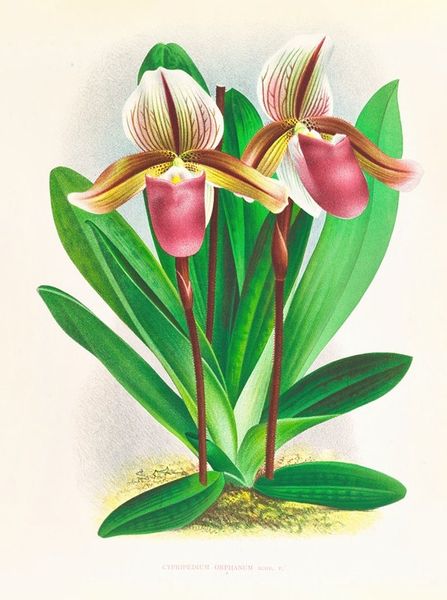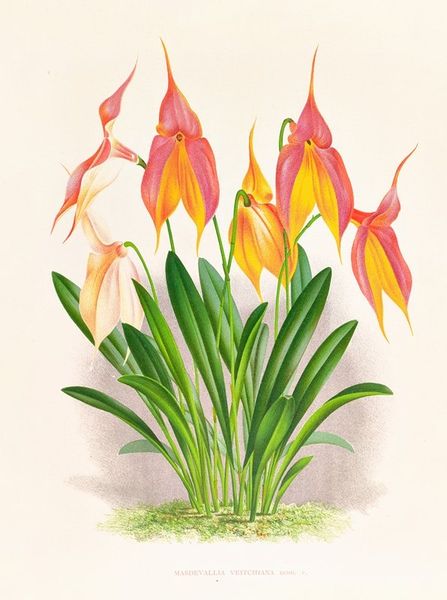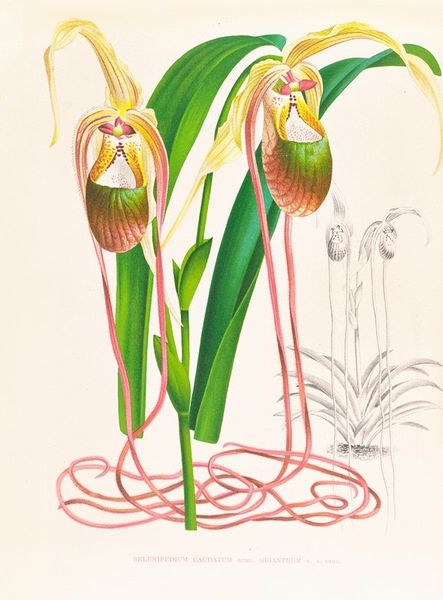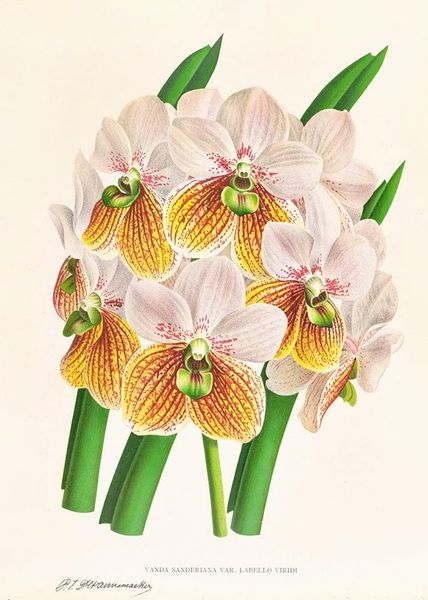
Copyright: Public Domain: Artvee
Curator: Here we have Jean Jules Linden's "Odontoglossum schillerianum," a watercolor drawing, dating from between 1885 and 1906. What strikes you most about it? Editor: You know, there's this immediate cheerfulness about it. The speckled, almost freckled petals of these orchids—they seem so playful against the very green and sort of grounded stems. A botanical burst of happiness! Curator: Interesting choice of words. This type of botanical illustration, popularized during colonial expeditions, often carries complex histories. While seemingly objective, these artworks are deeply intertwined with power structures of their time, often showcasing nature appropriated and classified through a Western lens. Editor: Oh, I see what you're saying. Like, framing it as scientific when there’s a whole worldview embedded in it? It is wild how such a lovely piece could hold all that tension. Makes you wonder who was benefiting from this beauty. Curator: Exactly. Linden, a notable botanist and orchid enthusiast, was contributing to a larger system of cataloging and commodifying the natural world, turning exotic flora into commodities and symbols of status for the European elite. These representations solidified colonial dominance by shaping perceptions and controlling access to resources. Editor: Right. The vibrant detail and the almost exaggerated perfection–it feels like a staged presentation, less about the true nature of the flower and more about... selling the idea of it? Still, those spotted petals against the smooth, cool stems – artistically, that’s pretty brilliant. Curator: The very act of isolating this orchid, devoid of its surrounding environment, speaks to a desire to extract and possess. How does acknowledging this influence your emotional connection to the piece? Editor: It adds a layer of responsibility, I think. You can’t just passively admire the "pretty flower," you have to think about the history that’s clinging to it like, well, a vine. It does temper that initial, unthinking delight, definitely. Curator: Precisely. We must engage with these works critically, acknowledging both their aesthetic qualities and their complex historical positioning. Editor: Well, next time I'm inclined to describe art as "cheerful," remind me of all this. Seriously! It's good to complicate our narratives.
Comments
No comments
Be the first to comment and join the conversation on the ultimate creative platform.
